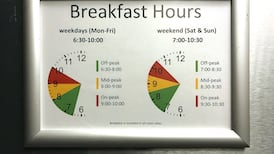The results of Election 2020 were in equal parts shocking and fascinating. Sinn Féin were obviously the stand-out party. The Greens and the Social Democrats also put in impressive performances, albeit the former did not do as well as might have been predicted a few months ago.
The huge Sinn Féin surpluses were a key feature of the outcome. Of the party’s 37 successful candidates, no fewer than 27 were elected on the first count with surpluses ranging up to 0.97 of a quota (Aengus Ó Snodaigh in Dublin South Central).
The distribution of these surpluses went on to play a key role in determining the destiny of the remaining seats. The distribution of these surpluses also reveals a good deal about the character of the Sinn Féin vote, and provides some insight into the party’s post-election preferences and strategy.
For the purpose of this exercise I have analysed only those Sinn Féin first-count surpluses that were obtained when there was no other Sinn Féin candidate in a position to benefit from them and the Sinn Féin second-count surpluses that arose from the distribution of a running mate’s surplus.
This means that Matt Carthy’s surplus in Cavan-Monaghan and Eoin Ó Broin’s in Dublin Mid West are excluded, but the surpluses of Pauline Tully and Mark Ward in these respective constituencies are included. In total the analysis covers the transfer of some 110,000 Sinn Féin votes across 27 constituencies.
Left-wing candidates
Not surprisingly Sinn Féin voters tended to favour other left-wing candidates and Independents. At a national level, 33 per cent of transfers went to parties in the Solidarity-People Before Profit/Socialist Party/Independents for Change grouping (henceforth PBP) and 23 per cent went to Independents. In Dublin, the preference for PBP was much more pronounced at 48 per cent, while Independents were less favoured at 18 per cent.
Interestingly, Sinn Féin transfers were much less likely to go to other left-of-centre parties. In constituencies where there were both PBP and Social Democrat (SD) candidates, Sinn Féin preferences much more heavily favoured the former. Across Dublin just 12 per cent of Sinn Féin transfers went to the SDs. For the country as a whole the proportion was just 7 per cent, reflecting in part the fact that there was a large number of constituencies outside Dublin where the SDs did not field a candidate.
The Labour Party found even less favour. In constituencies where there were both SD and Labour candidates, Sinn Féin transferred much more strongly to the former (Cork North Central is the only exception).
Across Dublin, the proportion of Sinn Féin transfers going to Labour was just 5 per cent, less than half the proportion accounted for by the SDs.
The Greens fared little better than Labour, receiving just 8 per cent of Sinn Féin transfers in Dublin, and just 10 per cent on a nationwide basis.
Predictably, the party that benefited least from Sinn Féin transfers was Fine Gael, receiving just 2 per cent in Dublin and 5 per cent in the country as a whole. Fianna Fáil fared somewhat better: 5 per cent in Dublin and 11 per cent nationwide.
Disadvantaged areas
Two other points are worth making. First, the pattern of transfers is obviously related to the socio-economic composition of party support. Sinn Féin is a party that draws its votes disproportionately from working class and disadvantaged areas. Detailed results from Dublin Bay North which I have seen demonstrate this very clearly: SF won 75-80 per cent of the first preferences in areas like Darndale and Priorswood but no more than 5-10 per cent in relatively prosperous Clontarf. On the other hand, the Greens are mainly a middle-class party, as is the Labour Party in Dublin, albeit to a lesser degree.
A second but connected point has to do with the so-called left-right political divide. As the UCC political scientist Teresa Reidy pointed out in one of the more intelligent post-election comments, the left is not a “thing”, it’s a spectrum, and a pretty wide one at that. Not everyone who self-describes as “on the left” feels much affinity with everyone else on the left.
The pattern of Sinn Féin transfers is eloquent testimony to this. It suggests that the Sinn Féin voter does not feel much greater affinity with the Labour Party than with Fine Gael, or with the Greens than with Fianna Fáil. I would add that these feelings are probably reciprocated.
I would also add that these feelings shed some light on why we are where we are in terms of the government formation process. The notion of a broad alliance of the left forming a government did not fail just because the combined seat total of the so-called left-wing parties fell short of the required number, it failed because some of these parties were simply not up for it.
First loyalty
A final thought. The first loyalty of political parties is to their voters: without voters they would not exist. That being the case, it is essential that parties pay attention to the preferences of their members when it comes to choosing government partners.
Probably the best available index of such preferences is provided by voting patterns, more specifically, in the case of Sinn Féin, by the distribution of their candidates’ surpluses. By this measure it would appear that Sinn Féin supporters do not want a coalition with Fianna Fáil. This being the case, it is reasonable to suppose that the Sinn Féin leadership does not want such an outcome either, and that in pretending otherwise it is engaging in a clever propaganda game.
Jim O’Leary is an economist








